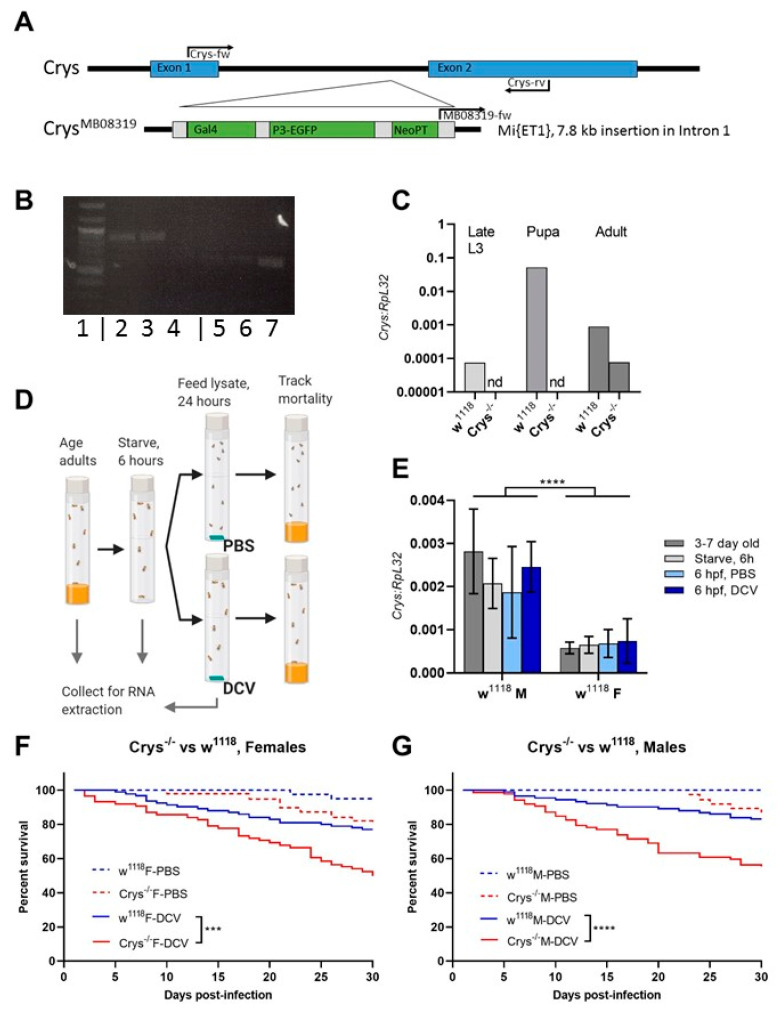Figure 3.
The loss of Crys increases the susceptibility to oral viral infection in adult flies: (A) the Crys−/− line originates from a 7.8 kb Minos-mediated insertion within intron 1 of the Crys gene, Mi{ET1} [61,62]. Primers for Crys used in this study were designed for differentially amplifying the Mi{ET1} insertion, the wild-type Crys gene, and cDNA obtained from processed mRNA. (B) The insertion was confirmed by conventional PCR (1: 100bp DNA ladder; 2, 3, 4: wild-type Crys gene in w1118, Champetieres, and Crys−/−, respectively; 5, 6, 7: CrysMB08319 in w1118, Champetières, and Crys−/−, respectively). (C) A decreased or total loss of mRNA expression [24] was confirmed by RT-qPCR in pools of wandering larvae, pupae, or 1-day-old adults of w1118 and Crys−/−, and ‘nd’ signifies none-detected. Relative expression of Crys to RpL32 was analysed by ΔΔCt of the estimated efficiency for each primer, each previously calculated from the dilution series of a known, positive sample. (D) Adult males and females of 3–7 days-old were briefly starved and orally challenged with PBS- or DCV-lysates mixed with sucrose, and used for RNA extractions and survival bioassays. (E) Neither the starvation nor 6 h after having initiated the oral challenge (hours post-feeding, hpf) led to significant differences in the expression of Crys mRNA of the wild-type controls [24] when analysed by a two-way ANOVA using Šídák’s multiple comparisons; however, the expression was significantly higher in males than in females at every condition. No Crys mRNA was detected in Crys−/− adults at any time point of the oral feeding setup (data not shown). (F,G) After the feeding challenge, we tracked the survival of adults for 30 days. Analysis of survival data indicates that the loss of Crys significantly increases the mortality of DCV-fed adults, after the analysis of survival curves using a Cox mixed-effects model (*** p < 0.001; **** p < 0.0001).

